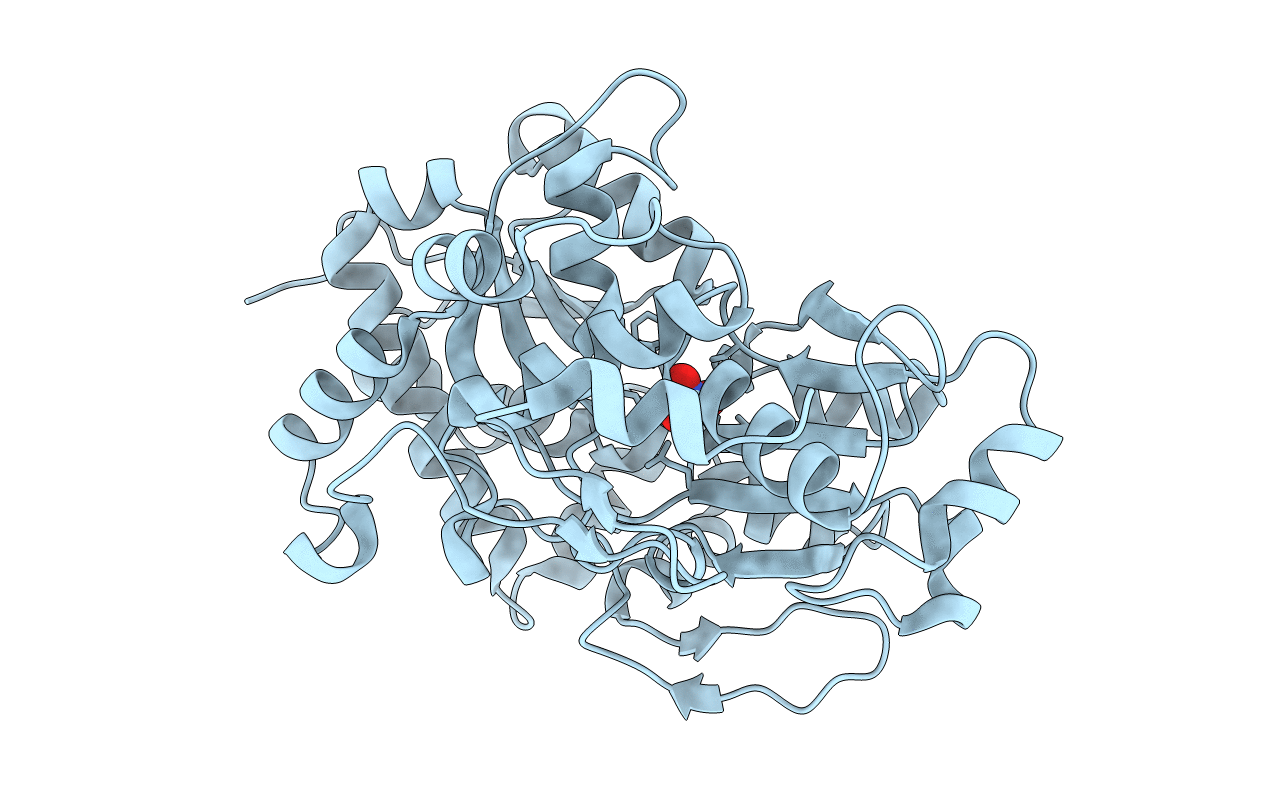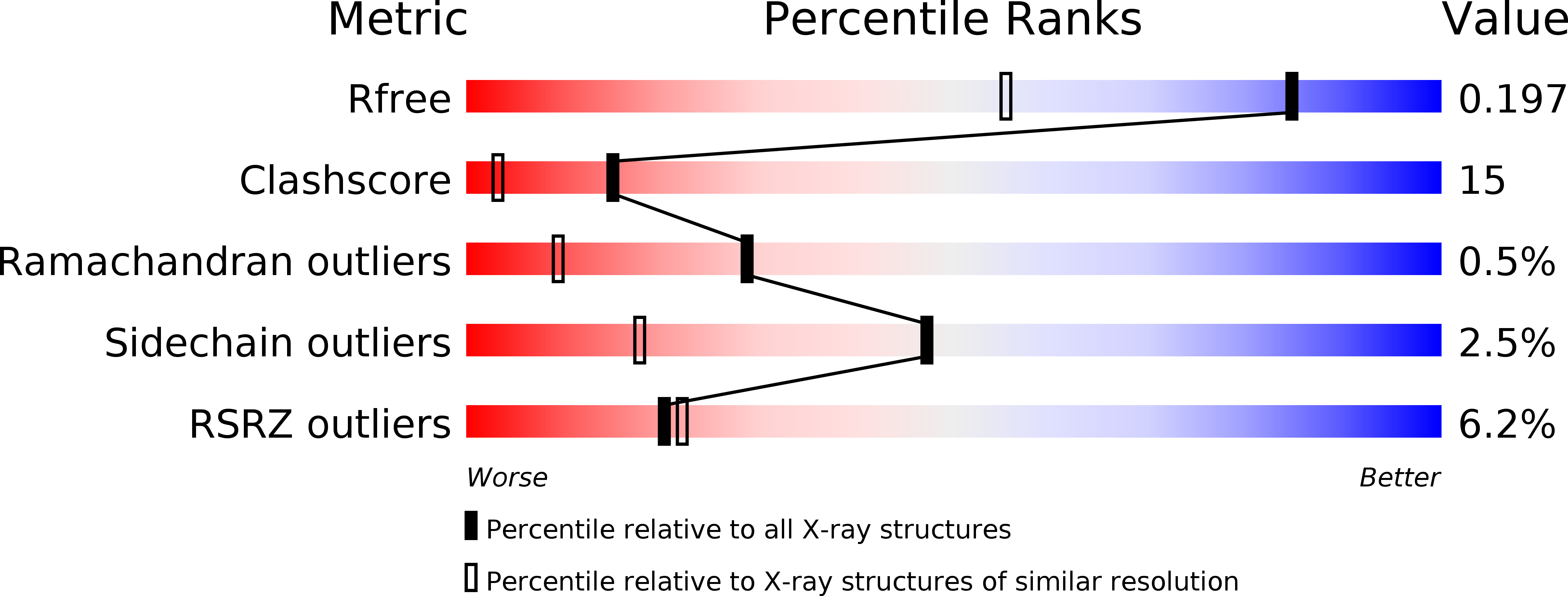
Deposition Date
2006-02-15
Release Date
2006-07-11
Last Version Date
2024-02-14
Entry Detail
PDB ID:
2G29
Keywords:
Title:
crystal structure of the periplasmic nitrate-binding protein NrtA from Synechocystis PCC 6803
Biological Source:
Source Organism:
Synechocystis sp. (Taxon ID: 1143)
Host Organism:
Method Details:
Experimental Method:
Resolution:
1.50 Å
R-Value Free:
0.22
R-Value Work:
0.20
R-Value Observed:
0.20
Space Group:
P 1 21 1


